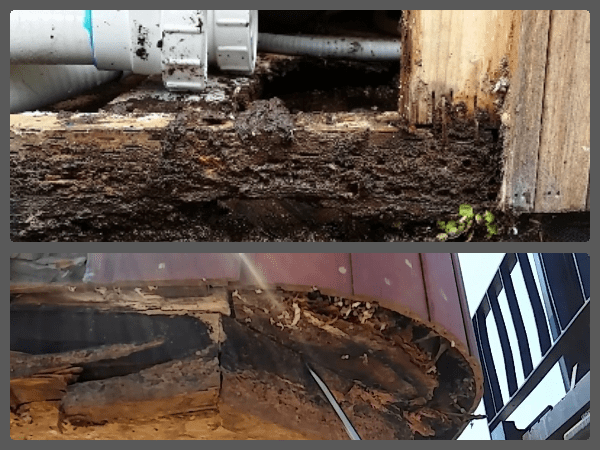
Hot Tubs 101 Part Two Construction
It has been my experience that customers have three basic things to consider when deciding on which hot tub to purchase. First is construction, and how is it built? This dramatically impacts how long the tub will last, the running cost, and overall repair costs. The second is maintenance. How easy will my hot tub be to take care of? This includes chemical adjustments, water changes, and equipment care. The third is Enjoyment, Relaxation, and Therapy. If the first two don’t line up, the third and foremost reason for buying a hot tub has become a waste of money.
The Frame
The Frame is the main structure that holds the shell upright. There are three basic types of frames—wood, Steel, and Plastic.
Wood has been used on hot tubs since the beginning and is today’s most common material. The two types of wood used are dimensional lumber and pressure-treated. Pressure-treated is the preferred of the two types as it resists rot and decay from the elements. Even though it is not directly exposed, pressure treatment can eventually fail over time. Some manufacturers will cut costs by using standard, cheaper lumber. The problem here is its lifespan. Standard lumber has a shorter life than pressure-treated when used in a hot tub and exposed to wet or snowy conditions.
Standard lumber may not get the job done if you want your tub to last more than ten years. You would be surprised that even some big names use standard lumber to build their tubs to save money.

Acrylic, as mentioned, is the most common and used by most hot tub manufacturers. However, there are some differences in how they are made. Most manufacturers use the fiberglass method. After the shell is vacuumed and formed, fiberglass is rolled on the backside to give it strength. The downside is that often, the acrylic is stretched very thin and can lead to spots that may wear out and leak. Also, the fiberglass can delaminate as the tub ages, meaning it can separate from the acrylic, leading to shell cracking and leaking. The second way to make a shell is to co-extrude it with a similar material, like ABS plastic. This process is a little more expensive. However, the tub will last much longer with fewer problems.
HDP: high-density polyethylene is essentially plastic. This is an excellent material for a hot tub as it lasts a long time and is less expensive than acrylic. It can be used to make just the shell or, like a roto-molded tub, the whole structure. The only real downside is its visual appeal. Compared to acrylic, it looks bland.
Vinyl is used in two ways: as a liner inside a frame like an above-ground pool and as an inflatable. Both of these are generally used in plug-in tubs.
Steel has varied opinions about this for use in hot tubs. The basic fact is that steel frames will rust in the same wet and snowy conditions that standard lumber will rot in. Given a choice, I would choose pressure-treated lumber over steel. Even though the frame is not exposed, it can still rust from humidity, puddles of water from rain or snow around the outside of the tub, and condensation. When your tub is running, it produces heat, which is good at helping to keep the water warm but not so good for the steel frame. In this scenario, cold air seeps into the cabinet, which can cause condensation when coming into contact with warm air in the service compartment.

We have seen many rusted-out tubs that customers have asked us to dispose of, usually less than ten years old.
Plastic frames are the latest development in hot tubs. Like wood, there are suitable plastic frames and bad plastic frames. The most significant advantage of plastic is its longevity. It will not rot or rust and will last the tub’s life. Companies like Bullfrog and some Hotspring products do a great job with their plastic fame. Both use techniques in the plastic studs to increase their strength. Some companies don’t spend the extra money to do it right but use it as a gimmick to sell more hot tubs.
Hot Tub Shells
The shell of a hot tub is the vessel that holds the water. There there are several types. Acrylic is the most common type. HDP and a vinyl liner.
Insulation
This is a controversial subject based on individual opinion. Insulation can be as simple as a blanket around the tub. It can be lost, blown in, or sprayed on foam like in some older homes. Let’s take a closer look at the options.
The blanket system. Depending on the manufacturer, this can be a blanket of insulation, a roll of reflective foil, or both. The insulation blanket can be made from different types of material but essentially works the same. This type is problematic as it has nothing to hold up the plumbing. Plumbing support is critical. Without it, plumbing connections will fail. A blanket system is also not airtight. Imagine laying in bed with a nice warm blanket, not having it covering your feet; the rest of you is warm, but cold air is seeping in at your feet. The other type of blanket is a reflective foil. This is not an insulator, just a heat reflector to try and hold heat in, only reflecting the heat into the hot tub. It does very little to keep the cold out.

Blown-in is used by several manufacturers and is advertised as being environmentally friendly. This can be a great alternative to the blanket system if the plumbing is supported. When done correctly, this insulation blows into every part of the hot tub except the equipment compartment. The downside of many of these is that it can make an excellent nesting home for small critters, and if your plumbing should leak, it may require replacing the insulation depending on its type.
Foam is the most widely used. It has the benefit of keeping the heat in and the cold out. It holds the plumbing in place to prevent joint separation, extending the hot tub’s life. Depending on the manufacturer, some will only use a thin layer of foam around the shell and claim that their tub is fully foamed, which technically it is. However, the R-value would be very low and have little or no plumbing support. All the top manufacturers that use foam will encase everything from the shell to the frame. This will give you the best R-value and plumbing that will not move under the stress of water surging and running through it. The only downside is if you should develop a leak, it will take some time to repair to remove the old foam and then replace it.